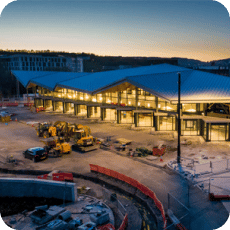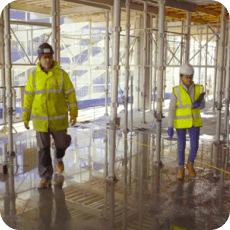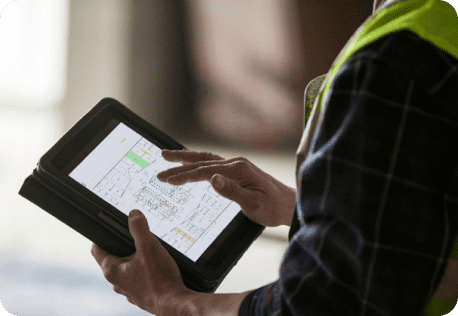Adapting to constant change
Staying on the same page when faced with disruption and change is a crucial part of any construction project. Spanning more than six years, the Merthyr Tydfil bus interchange plans arguably changed more than most.
Alun Evans, strategic infrastructure programme manager for MTCBC, found Bluebeam’s software to be of “great assistance” in supporting communication, providing timely updates and boosting project efficiency. With numerous stakeholders, including 10 Cardiff Capital Regional Transport Authority local partners, effective collaboration was essential.
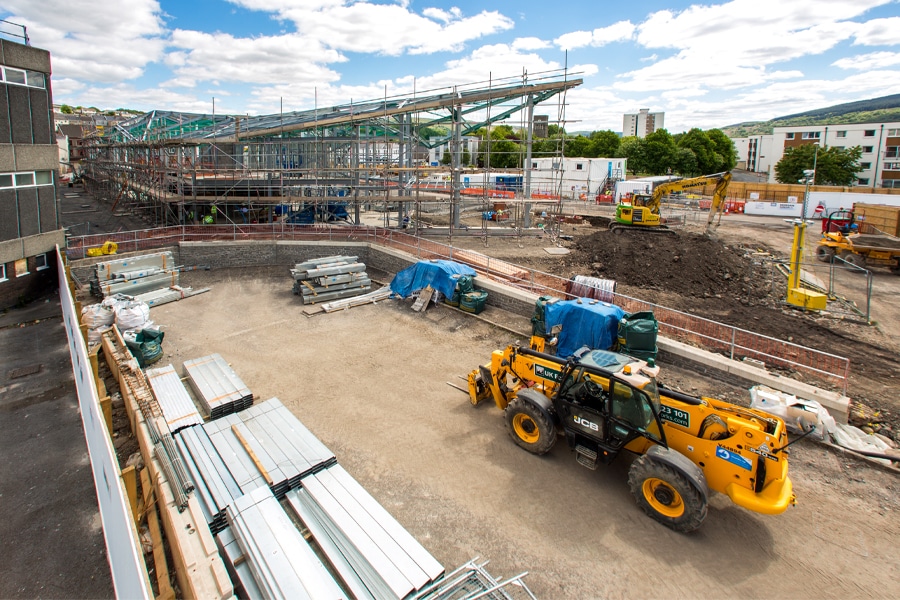
Ross Williams, site manager and project lead at Morgan Sindall, also made the most of Bluebeam’s capabilities to communicate change in an open and transparent way. Bluebeam allowed Williams to manage Evans’ expectations well. Reflecting on how the team used Bluebeam day to day, Williams noted: “when a [software] feature is clear and simple, it’s really striking for those who use it. Historically with information scribbled on paper, finer details might have been lost in translation. But with Bluebeam, Williams could keep both MTCBC and Capita informed quickly and accurately.
Bluebeam’s clarity and simplicity allowed this team to flourish. It worked more efficiently, opted for collaboration over confrontation and formed exceptionally open, supportive relationships. This meant that the team pushed to exceed the expectations of the brief, making choices that would benefit both the local economy and environment.
As Evans said, “Bluebeam proved particularly helpful as the contractor was able to present timely information to the client in the decision-making process … It was of great assistance.”
Building sustainably
When the project started in 2015, sustainable principles weren’t an essential feature of the brief. But midway through the project, the Welsh government set ambitious targets for the electrification of public transport by 2028. Usually when such substantial changes come after a project is onsite, a team might think they’re “not our problem.” But with such close-knit communication and proactive project partnership, this team felt able to challenge itself to make more positive sustainable changes.
"Bluebeam allowed us to easily identify, measure and quantify some complicated paving involving lots of different colours, intersecting lines and shapes. It would’ve been an absolute nightmare to split that down into its elements and measure it bit by bit. That was invaluable really.”
Ross Williams
Site Manager and Project Lead
Morgan Sindall
The bus interchange is Wales’ first with ULEV charging for both buses and taxis. The team didn’t just introduce technology to allow the future electrification of local public transport, but also the electrification of the interchange building itself. In the build phase, the team quickly readapted plans and removed the gas boiler and the need to have fossil fuels onsite. The building’s heating and hot water systems are powered by 100% green renewable energy sources, and the public toilets are fed by a rainwater harvesting tank, reducing the carbon impact for the building’s whole lifecycle.
MTCBC’s new sustainable vision changed the energy performance certificate from a D to a B. All parties including contractors and subcontractors came together to chase this goal and motivate one another. The result is a transport interchange that is 100% fossil-free and fit for the 21st century.
Circular economy
To minimise transport to site, the team sourced materials from nearby places, even if they came at a premium cost. The team also went a step further by employing local suppliers and tradespeople to best benefit the local economy and people who worked and lived in the area. More than 95% of the supply chain businesses used in the construction phase were based within 25 miles of the site.
The team chose robust materials to last the test of time, like hard-wearing granite floors capable of withstanding heavy pedestrian traffic. When it does come time to replace certain elements, the design incorporates different layers, splitting elements off so they can be easily replaced without disrupting the greater structure or system. For example, when the timber soffit comes to its end of life, the panels can simply be unscrewed, readily recycled and replaced without impacting the integrated alarm system.
Design flexibility
Bluebeam’s Design Review came into its own. It allowed the project partners to mark up and collaborate on the same documents in real time or remotely, meaning the team could communicate project data better, with customised, in-depth annotations. All the markups appeared in an integrated, customisable list for easy tracking. The team could also save and organise custom markups in the tool chest—for example, features like PDF Markups, which add annotations like text, highlights or callouts to your documents, or Hyperlinks, which can take you to other pages, specific locations in your documents, web pages and even other documents.
"Bluebeam proved particularly helpful as the contractor was able to present timely information to the client in the decision-making process … it was of great assistance.”
Alun Evans
Strategic Infrastructure Programme Manager
Merthyr Tydfil County Borough Council
The team found Design Review and Markups simplified and sped up the review process, enabling the teams to overlay plans and clearly compare, communicate and document changes. “Historically you’d be scribbling on a drawing and trying to scan it, or doing markups on paint,” Williams said. “It gets lost in translation.”
Despite having a small footprint to work with, the architects designed an intricate structure with many moving parts. For its ISO accreditation, Capita needs to keep an accurate account and a markup of all the information that went out. A traditional markups system where drawings must be scanned in would have led to cumbersome, clunky communication. Since the team was working from home, Bluebeam’s Markup tool proved invaluable both to communicate with the builders onsite when working remotely and to satisfy the ISO accreditation needs.
Capita used Bluebeam’s Calibrate and Measurement tools to determine a PDF’s scale and enable accurate measurements. These changes were shown as Markups, which meant any changes were displayed straight into the design itself.
Capita said these Bluebeam features were instrumental in allowing Morgan Sindall to pay close attention to the design detail. It credited the Morgan Sindall team in using digital tools like Bluebeam to make such a complex design achievable.
Speedier timeframes
Before Bluebeam, the team most likely would’ve come together for in-person meetings and workshops to work through changes. With the pandemic and remote working, however, that wasn’t a possibility. Fortunately, Bluebeam proved extremely helpful in this regard. Bluebeam encouraged a speedy transfer of knowledge that meant the team got different aspects of the project sorted in a matter of days, not weeks.
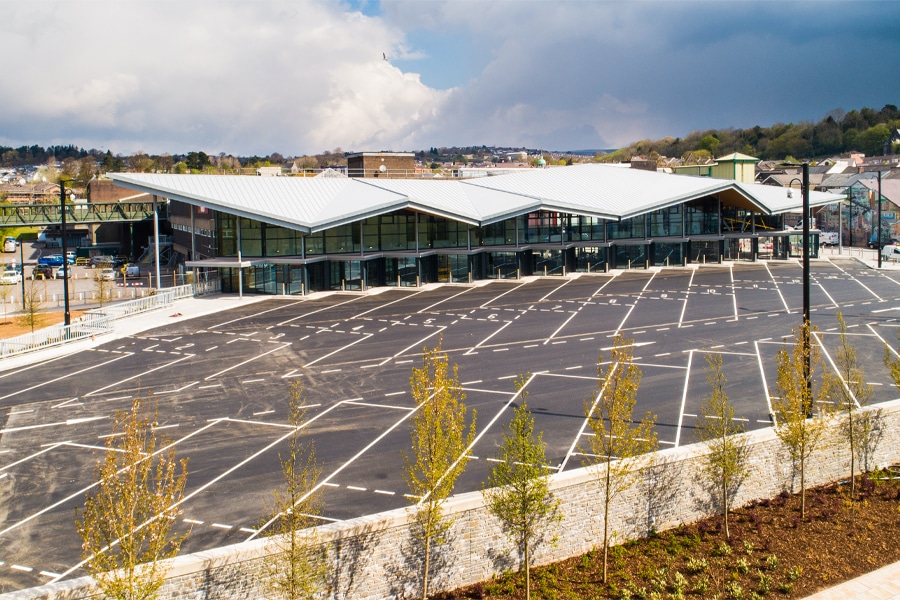
“Bluebeam allowed us to easily identify, measure and quantify some complicated paving involving lots of different colours, intersecting lines and shapes,” Williams said. “It would’ve been an absolute nightmare to split that down into its elements and measure it bit by bit. That was invaluable really.”
With Bluebeam’s quantities and estimation tools, the team could identify, measure and quantify these different parts much faster and keep an accurate eye on costs.
Accurate estimations
The Quantity Surveying team used Bluebeam tools to create more accurate measurements and cost estimates. Measurement tools in Revu helped them capture a project’s true scope, then track measurements in the Markup List and export data easily to Microsoft Excel. The planning team who put together the construction programme used the same tool for sequencing and planning the project timelines. These tools also allowed for faster, more accurate and more thorough QA and QC reviews. In no uncertain terms, the QS team coined Bluebeam “the best thing ever.”
"The pandemic made local authorities sit up and realise how technology can assist business, and they’re taking that on in leaps and bounds.”
Alun Evans
Strategic Infrastructure Programme Manager
Merthyr Tydfil County Borough Council
A proudly sustainable achievement
The new sustainable bus interchange is a striking, iconic building well suited to an ever-changing modern world. And, crucially, it functions brilliantly as a bus interchange. Evans said its “successful delivery to such a high specification is a game changer for Merthyr Tydfil,” setting the tone for the new town centre master plan aspirations. Community feedback so far has been fantastic, even with the challenge of increasing public transport usage during the pandemic.
Despite the challenges it posed, Evans believes the COVID-19 pandemic has “made local authorities sit up and realise how technology can assist business, and they’re taking that on in leaps and bounds.” Thanks to the Welsh government sustainable funding initiative, the bus interchange is a success story that will serve the local community well. The team is immensely proud of the way they collaborated digitally and in person to achieve such an exceptional outcome.
